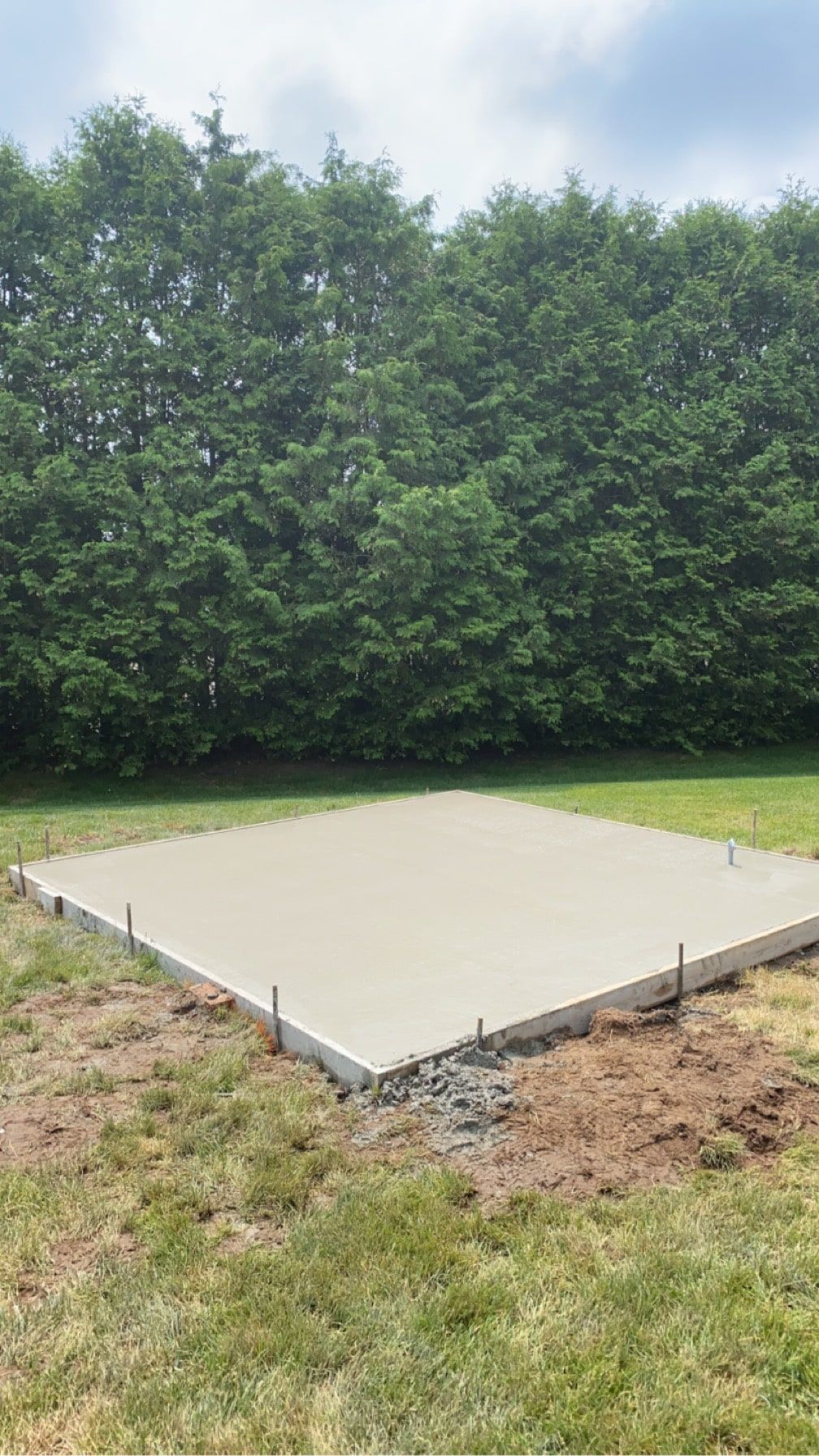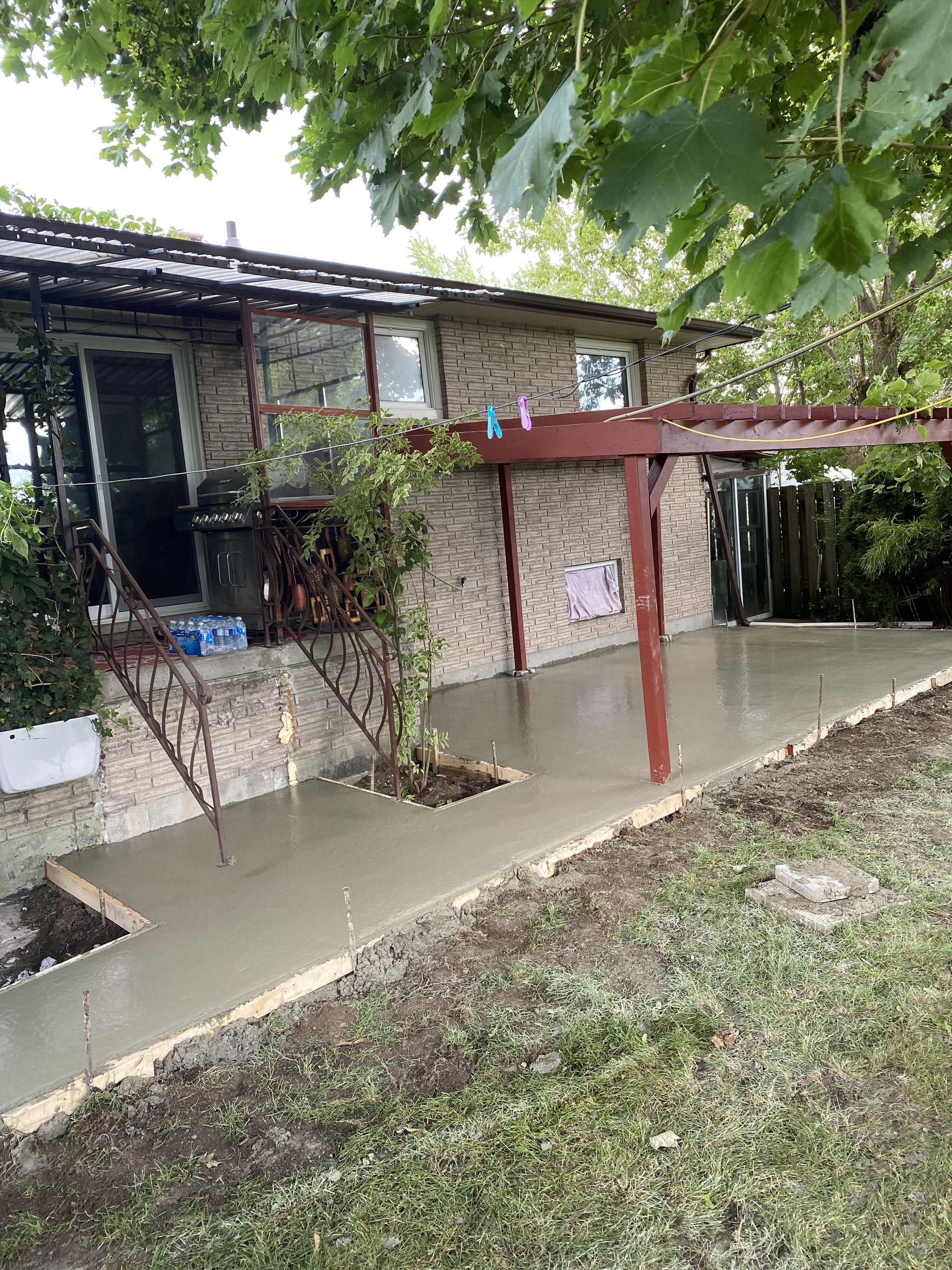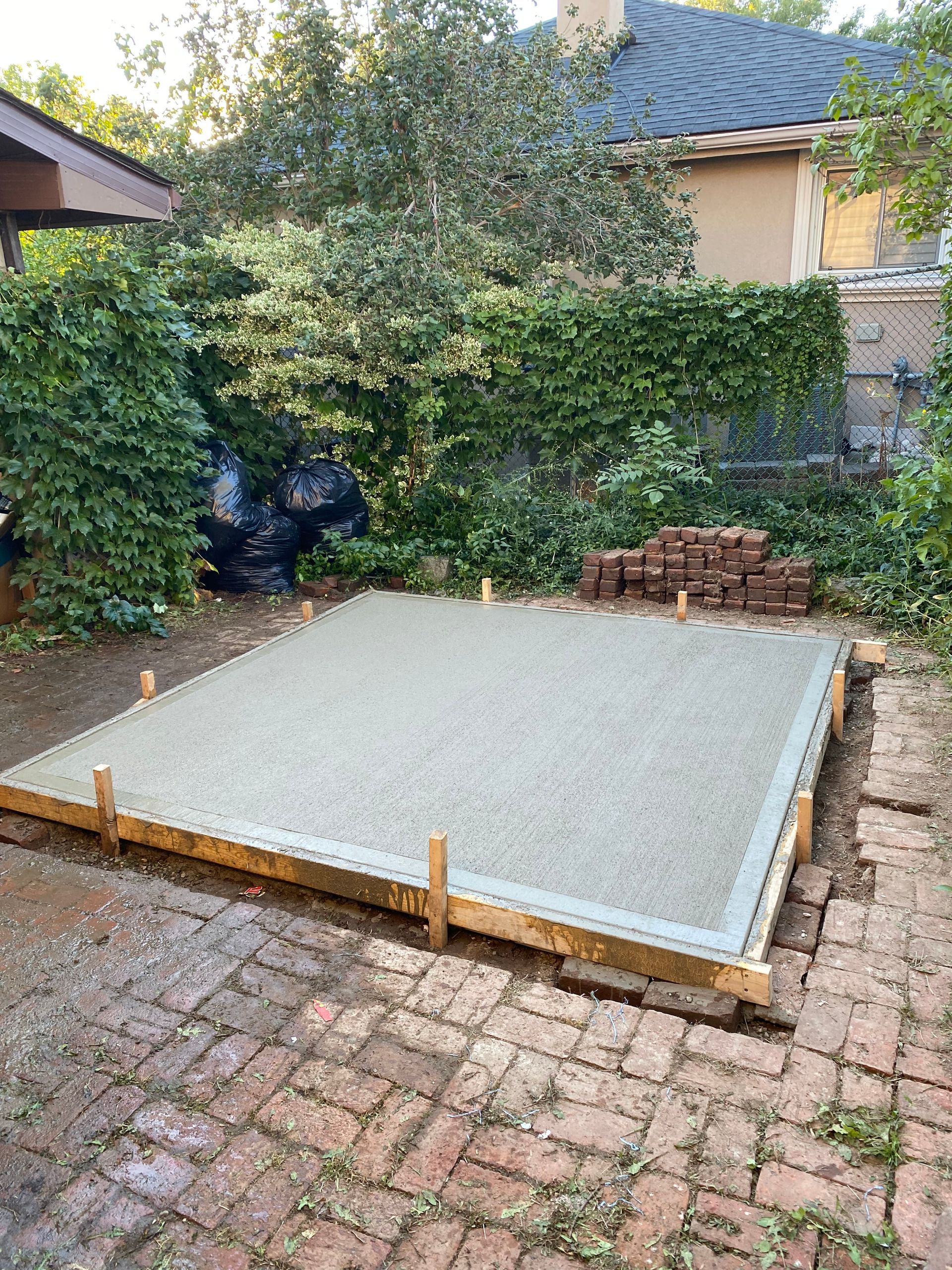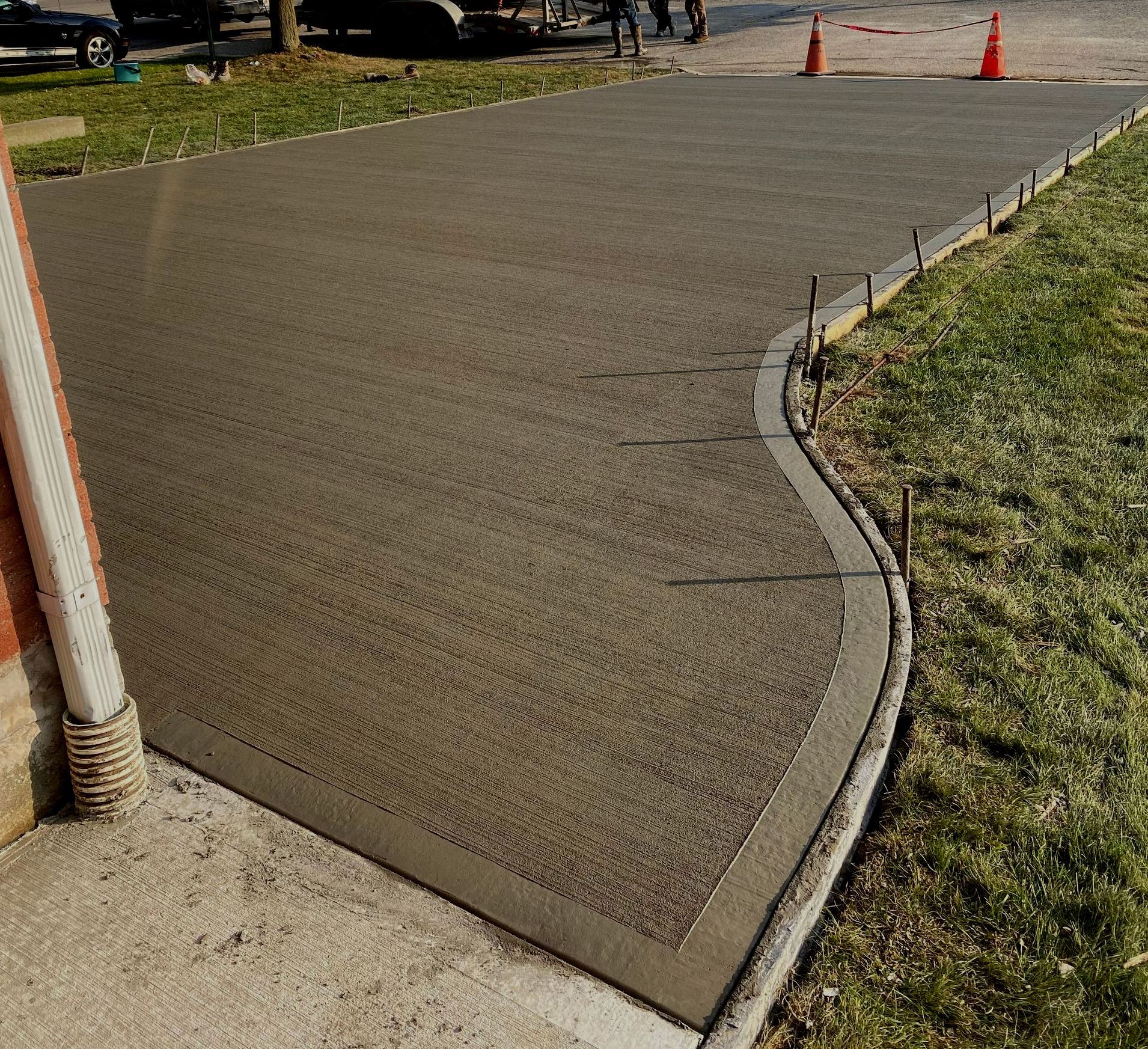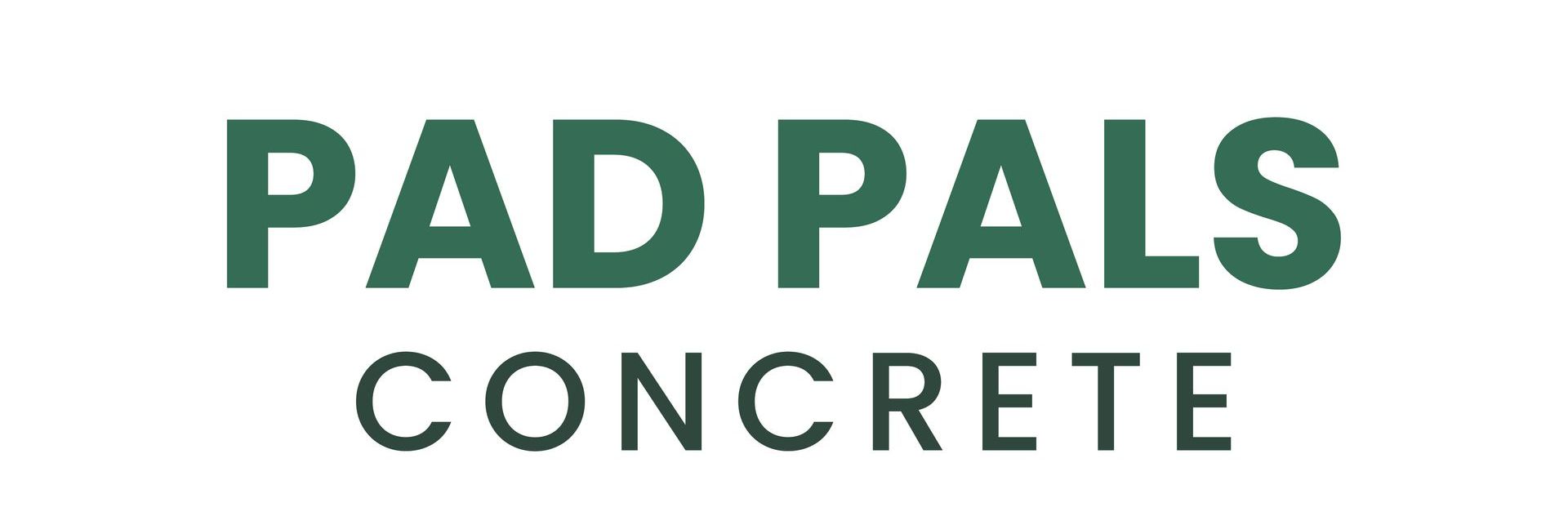Concrete Pads Hamilton & Burlington
Concrete pads are versatile, durable, and essential for a wide range of residential and commercial applications. Whether you need a sturdy foundation for your shed, a smooth base for your hot tub, or a reliable surface for industrial equipment, we provide high-quality concrete pad solutions tailored to your needs.
Concrete Pad Services in Hamilton & Burlington
We specialize in designing and installing concrete pads for a variety of purposes:
- Shed Pads: A properly installed concrete shed pad ensures your structure stays level, secure, and protected from shifting or moisture damage.
- Hot Tub Pads: Support your hot tub with a smooth, reinforced pad that can handle the weight and keep it stable for years.
- Air Conditioner & Generator Pads: Ensure your outdoor equipment sits on a durable, level foundation to avoid wear and tear caused by uneven surfaces.
- Garage & Workshop Pads: Our concrete pads are built to handle heavy machinery and vehicles, creating a reliable workspace.
- Commercial Equipment Pads: From industrial HVAC systems to manufacturing equipment, we design pads for high-load, high-traffic applications.
Our Concrete Pad Installation Process
The Concrete Solutions Way
1. Consultation & Planning
- We start by understanding your specific needs. Whether it’s for residential or commercial use, we’ll evaluate the site, discuss your requirements, and provide recommendations for pad size, thickness, and reinforcement.
2. Site Preparation
- We’ll clear and level the area to ensure a solid foundation. For heavier loads, we’ll excavate to the proper depth and compact a gravel base for added stability.
3. Reinforcement
- To maximize strength and durability, we incorporate rebar or wire mesh reinforcement into every concrete pad we pour. This prevents cracking and ensures the pad can handle heavy use.
4. Pouring & Finishing
- We use premium concrete mixes to pour and level the pad. Once poured, we finish the surface to match your requirements, whether it’s a smooth finish or a non-slip texture.
5. Curing & Final Inspection
- Curing is critical to the strength of the pad. We allow 7-10 days for proper curing before the pad is ready for use. We inspect the pad to ensure it meets our high standards before project completion.
Four popular types of concrete finishes you can consider for your pad
Concrete Pad Hamilton & Burlington FAQ
Why does concrete pads crack?
Cracking can happen due to several factors, including:
Shrinkage During Curing: As concrete dries, it naturally shrinks. If not properly controlled, this shrinkage can cause cracks.
Temperature Changes: Expanding in heat and contracting in cold can lead to cracks, especially without proper reinforcement.
Improper Subgrade Preparation: A poorly compacted or uneven subgrade can cause the concrete to shift and crack over time.
We take steps to minimize cracking with proper site preparation, reinforcement, and curing methods.Cracks in walkways can happen due to natural shrinkage as the concrete cures, temperature changes that cause expansion and contraction, or movement in the soil below.
Proper reinforcement and installation techniques significantly reduce the risk of cracking.
Can concrete pads be repaired?
Yes, many types of concrete pad damage, such as cracks or surface spalling, can be repaired.
Small cracks can often be filled with epoxy or polyurethane, while larger repairs may require resurfacing. For significant structural issues, replacement might be the best option.
How thick should a concrete pad be?
The thickness of a concrete pad depends on its use:
For residential applications like hot tubs or sheds, 4 inches is typically sufficient.
For commercial or heavy equipment use, a thickness of 6-8 inches may be needed.
We’ll recommend the right thickness based on your project’s requirements.
How long does it take for a concrete pad to cure?
Concrete pads require 7-10 days for initial curing before they can handle light use. However, full curing can take up to 28 days for maximum strength.


